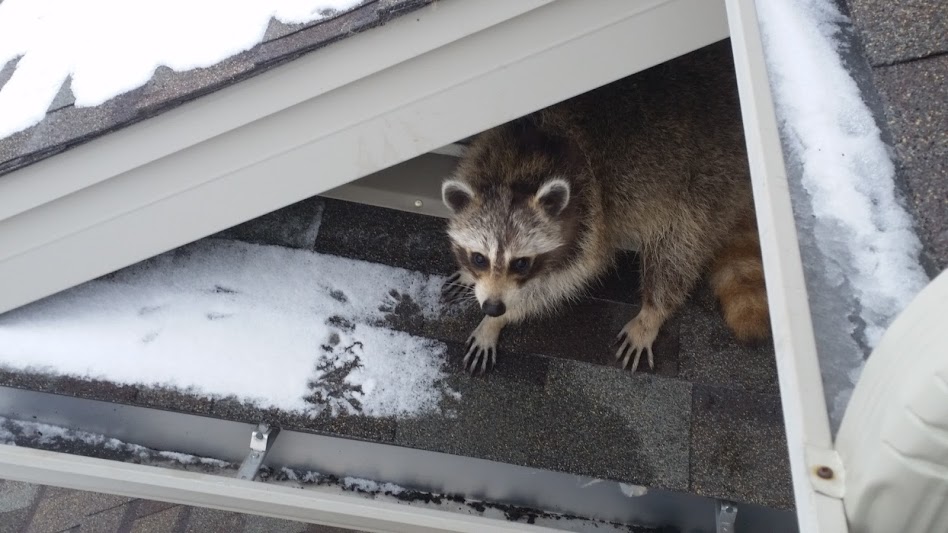During the winter months, most wildlife will hide away until the daylight hours pass, choosing to preserve energy and heat. However, as the spring rolls around, it will be time for those same creatures to multiply. Thus, raccoons and many other animals spend part of the winter getting ready for the mating and birthing season. If you suspect that you may have raccoons nesting on your property, now is the time to call Skedaddle Humane Wildlife Control to start talking about raccoon removal before babies arrive in spring.
Raccoons Preparing To Have Babies in the Spring
During much of the winter, raccoons are in a state called torpor. This is similar to hibernation in that the animals significantly decrease their physiological activity while also reducing their temperature and metabolism so they can conserve energy. This allows them to survive the winter despite the weather being cold and food being scarce.
However, despite using torpor to increase their survival odds, raccoons do not spend the entire winter lounging around their nests. They spend some time searching for food in our communities to build up their stocks, while also chowing down on as much food they can get their little hands on to increase their fat reserves.
Raccoons typically also mate during the late winter. Mothers will use a combination of stored foot, torpor and fat reserves to ensure that their bodies are healthy and ready to grow a new litter of babies. Unlike some mammals, raccoons usually have only one litter per year. This is usually in April or May but might be as early as March. Some mothers have a second litter as late as July if they lose their first, but that is rare.
Picking a Den Site
When searching for den sites, raccoons look for areas that will be warm and dry for their young to grow up. Plus, they want to find locations that are protected from predators while offering convenient access to food.
Unfortunately for humans, this often means that raccoons like to set up nests in attics, porches, sheds and other secluded but well-protected human structures. Once they have a litter in the den site, having them removed becomes much more complicated. So, it is important to address the problem as quickly as possible.
You may be surprised by how capable raccoons are at accessing good den sites. They are skilled climbers who can crawl through small spaces. Additionally, they are surprisingly dexterous with their front paws. Thus, they can move obstructions to reach optimal sites for their nests. People even find them in chimneys, having climbed trees or even the outside of the building to reach the roof. The Skedaddle Humane Wildlife Control team has found raccoons in attics that had scaled a homeowner’s building and squeezed their heads through tiny gaps to reach the warmth and safety of insulated roof space.
What To Do If Raccoons Nest on Your Property
You may notice that there are raccoons living on your property due to damage, open trash cans, droppings or signs of entry points If this happens, call humane wildlife removal services immediately.
Never try to handle or remove wildlife yourself. Raccoons can carry rabies and other diseases. While they are not generally aggressive towards humans, they can bite and scratch if they feel threatened. This is especially true if there are babies in their nests. Furthermore, without proper technique and equipment, it is difficult to achieve long-lasting results for raccoon removal.
Schedule Raccoon Removal Today
Typically, you will get the best results for raccoon removal before the arrival of baby season in the spring. If you suspect that you have raccoons or other wildlife living on your property, contact Skedaddle Humane Wildlife Control right away. We can assess the situation and create an effective plan for removal. Our knowledgeable technicians will use our proven three-step technique to remove the wildlife family as one family unit and protect your home against future infestations.



